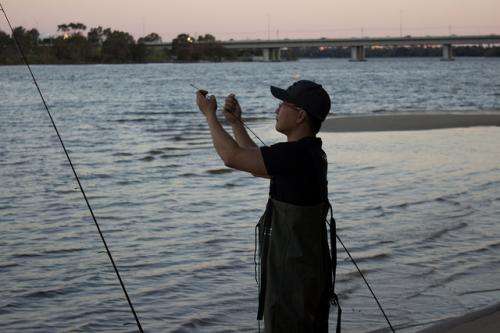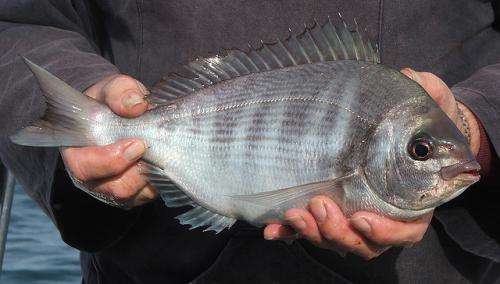Restocking marine life to ensure seafood for the future

Fish stocks around the world are under increasing pressure from fishing and human impacts such as excess nutrients entering the water, pollution, habitat loss and climate change.
One method of replenishing fish populations is restocking, which is the release of aquaculture-raised individuals into natural systems in an effort to restore depleted stocks.
Australia has been making a significant contribution to restocking fish and invertebrates in marine and estuarine environments since the 1990s.
A good example of this is found in Western Australian with the trial restocking of the key recreational species Black Bream (Acanthopagrus butcheri) in the Blackwood Estuary near Augusta.
This study by Murdoch University, the Challenger Institute of Technology and funded by the Fisheries Research and Development Corporation showed that fish grown in aquaculture could be released into the estuary and that
they survived, grew, reproduced and supported both the commercial and recreational catches.
Restocking efforts in the metro area
Current research involving the Challenger Institute of Technology, Murdoch University and the Swan River Trust is investigating the potential for restocking prawns in the Swan Estuary.
Drag netting for a feed of prawns at night is an iconic pastime in the estuaries of eastern and Western Australia and it was estimated that over 50,000 people went prawning regularly on the Swan and Peel-Harvey estuaries in the 1980s.
Catch rates were good and people often brought gas stoves down to the banks of the estuary to enjoy a prawn dinner with their family.
However, since those 'glory days', numbers of the Western School Prawn or River Prawn (Metapenaeus dalli) have declined markedly in the Swan.
The reasons for the decline are unclear, and, as a result of the reduction in the prawn population, far less people have been prawning since the 1990s.
As restocking has the potential to increase prawn numbers in the Swan Estuary, a project was undertaken to see whether the species can be grown in aquaculture and, if so, can restocking restore the fishery for this species.
This project achieved a world-first over the summer of 2013/14, successfully culturing juvenile Western School Prawns and releasing 650,000 juveniles into the Swan-Canning Estuary in early 2014.

A monitoring program is also underway to identify areas of the estuary where the prawns live and then select the best areas to release the aquacultured juveniles to ensure maximum survival.
Understanding the habitat preferences of the species will also help establish whether changing environmental conditions were partially responsible for the decline.
An important component of the project known as Prawn Watch involves the engagement of the community in helping to sample prawns to collect the spawners for aquaculture, provide information on prawn distribution and increase knowledge of prawns and the Swan Estuary.
The project is funded through the Recreational Fishing Initiatives Fund, The Fisheries Research and Development Corporation and the Swan River Trust.
Provided by Science Network WA



















